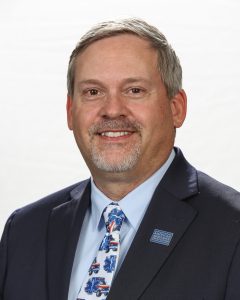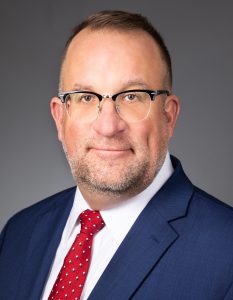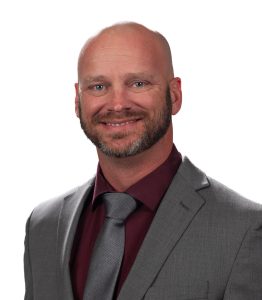Advisory from Alston & Bird, Consultants to American Ambulance Association
On July 4, 2025, H.R. 1, the One Big Beautiful Bill Act, was signed into law by the President.1 Section 71401 of the bill creates the Rural Health Transformation Program (RHTP). This document describes the program and how ground ambulance providers could receive funds from RHTP. In general, there is no statutory prohibition or requirement regarding the types of entities that could receive any of the funds appropriated to a state under RHTP, so long as the funds are provided consistent with an approved state application. In other words, absent guidance or administrative requirements regarding the use of these funds, ground ambulance providers regardless of rural status, could be eligible to receive payments, which is likely aligned with the drafters’ intent.
I. Summary of RHTP
Funding for RHTP is authorized at $10 billion for each of fiscal years (FYs) 2026 to 2030.2 Half of the funds provided will be allotted equally among the 50 states with an approved application. The other half of the funds will be allotted by the Administrator of the Centers for Medicare & Medicaid Services (CMS), who must ensure that no less than one fourth of the states with an approved application for a FY are allotted funds under this program, considering:
- The percentage of the state population located in a rural census tract of a metropolitan statistical area (as determined by the most recent modification of the Goldsmith Modification).
- The proportion of “rural health facilities” in the state relative to the number of “rural health facilities” nationwide.3
- “Rural health facilities” are defined as: certain acute care hospitals that are paid under the Medicare Inpatient Prospective Payment System (IPPS); a critical access hospital; a sole community hospital; a Medicare-dependent, small rural hospital; a low-volume hospital; a rural emergency hospital; a rural health clinic; a federally qualified health center (FQHC); a community mental health center; a health center that is receiving a grant under section 330 of the Public Health Service Act; an opioid treatment program that is located in a rural census tract of a metropolitan statistical area; and a certified community behavioral health clinic that is located in a rural census tract of a metropolitan statistical area.
- Note that this list does not specify which entities will be entitled to payments from this Rather, it is only used in calculating how some of the funds in this program are distributed.
- Any other factors that the CMS Administrator deems
To receive RHTP funds, states must submit an application to the CMS Administrator during the applicable application period (as specified by the CMS Administrator but ends no later than December 31, 2025) that includes:4
- A detailed rural health transformation plan to:
- Improve access to hospitals, other health care providers, and health care items and services furnished to rural residents of the state;
- Improve health care outcomes of rural residents of the state;
- Prioritize the use of new and emerging technologies that emphasize prevention and chronic disease management;
- Initiate, foster, and strengthen local and regional strategic partnerships between rural hospitals and other health care providers in order to promote measurable quality improvement, increase financial stability, maximize economies of scale and share best practices in care delivery;
- Enhance economic opportunity for, and the supply of, health care clinicians through enhanced recruitment and training;
- Prioritize data and technology driven solutions that help hospitals and other rural health care providers furnish high-quality health care services as close to a patient’s home as is possible;
- Outline strategies to manage long-term financial solvency and operating models of rural hospitals in the state; and
- Identify specific causes driving the accelerating rate of stand-alone rural hospitals becoming at risk of closure, conversion or service reduction;
- A certification that none of the amounts provided by RHTP will be used by a state for intergovernmental transfer, certified public expenditure, or other expenditure to finance the non-federal share of expenditures required under any provision of law (including under the state plan established under the Medicaid or Children’s Health Insurance Program (CHIP) programs or under a waiver under those programs); and
- Any other information that the CMS Administrator may
Funds allocated to states must be used for three or more of the following health-related activities:5
- Promoting evidence-based, measurable interventions to improve prevention and chronic disease management.
- Providing payments to health care providers for the provision of health care items or services (as specified by the CMS Administrator).
- A health care provider is defined as a provider of services or supplier who is enrolled under Titles XXI (authorizing CHIP), XVIII (authorizing the Medicare Program), or XIX (authorizing the Medicaid program) of the Social Security Act (SSA).
- Promoting consumer-facing, technology-driven solutions for the prevention and management of chronic diseases.
- Providing training and technical assistance for the development and adoption of technology-enabled solutions that improve care delivery in rural hospitals, including remote monitoring, robotics, artificial intelligence, and other advanced
- Recruiting and retaining clinical workforce talent to rural areas, with commitments to serve rural communities for a minimum of five years.
- Providing technical assistance, software, and hardware for significant information technology advances designed to improve efficiency, enhance cybersecurity capability development, and improve patient health outcomes.
- Assisting rural communities to right size their health care delivery systems by identifying needed preventative, ambulatory, pre-hospital, emergency, acute inpatient care, outpatient care, and post-acute care service lines.
- Supporting access to opioid use disorder treatment services (as defined in section 1861(jjj)(1) of the SSA), other substance use disorder treatment services, and mental health services.
- Developing projects that support innovative models of care that include value-based care arrangements and alternative payment models, as appropriate.
- Additional uses designed to promote sustainable access to high quality rural health care services, as determined by the CMS Administrator.
The bill directs the CMS Administrator to publish program instruction or other form of program guidance and appropriates $200 million to the CMS Administrator for FY 2025 to carry out this program.6
II. Analysis
RHTP is structured to give states wide latitude in how they intend to use RHTP funds. Conversely, the bill gives CMS considerable discretion in how it distributes funds and which state applications to approve or deny. Under statute, there is nothing that explicitly excludes the use of RHTP funds to provide payments to any specific provider type or based on whether that provider is in a rural area. While CMS may issue guidance that relies on the definition of rural health facility as a way to limit eligible recipients, the program as statutorily constructed could be used to pay for tangentially healthcare-related projects and for providers and suppliers not defined as rural health facilities.
Accordingly, nothing in statute forbids states from applying for RHTP funds and including in their RHTP application a proposal to provide ground ambulance providers direct payments via the RHTP for the “provision of health care items and services.” Similarly, statute does not preclude a state using such funds for ground ambulance providers located in or servicing urban areas but the use of funds in this manner would have to be consistent with the state’s application and be in some way aligned with the permitted uses of funds. The only clear statutory limitation is that ground ambulance providers who receive RHTP funds must be enrolled in either Medicare, Medicaid, or CHIP.
While statute is broad, the discretion afforded to CMS presents some potential challenges on the use of funds. For example, CMS must approve the state application and would monitor annually to ensure funds are used appropriately. If a state does not reference using funds to support ground ambulance providers consistent with the requirements of the program and the state uses the funds in that manner, CMS could terminate the state’s participation in the program. Additionally, statute provides discretion to CMS to determine what is included as the “provision of health care items and services.” It is possible that this definition will be construed narrowly such as to reflect health care items and services provided to residents in rural areas but more guidance from CMS is needed.
1 P.L. 119-21, https://www.congress.gov/bill/119th-congress/house-bill/1/text.
2 42 USC 1397ee(h)(1)-(3).
3 42 USC 1397ee(h)(3)(D).
4 42 USC 1397ee(h)(2).
5 42 USC 1397ee(h)(5)-(6).
6 P.L. 119-21, Sec. 71401(c)-(d).








.png?width=652&upscale=true&name=Logo%20Redone%20Nunito%20(1).png)














